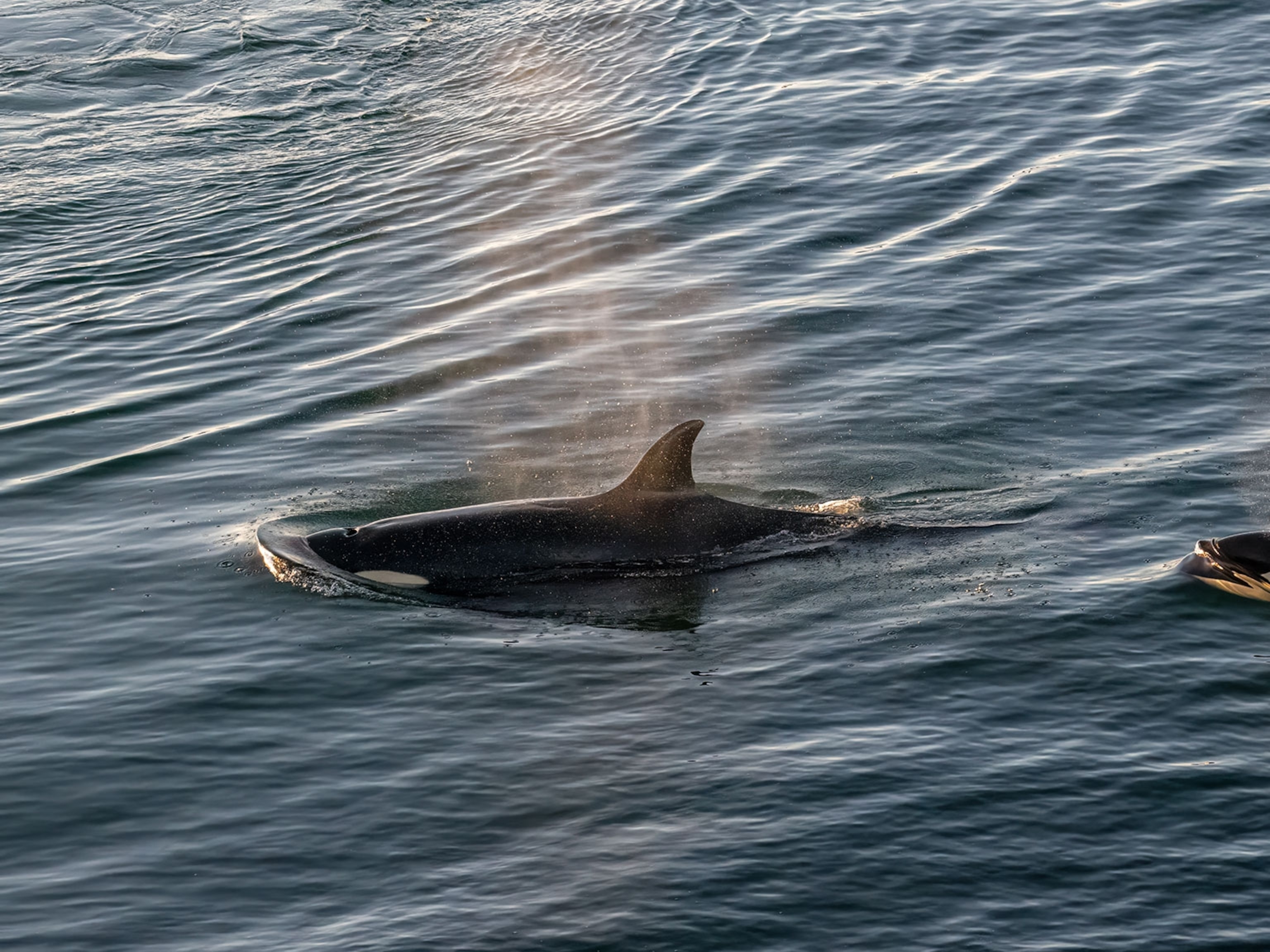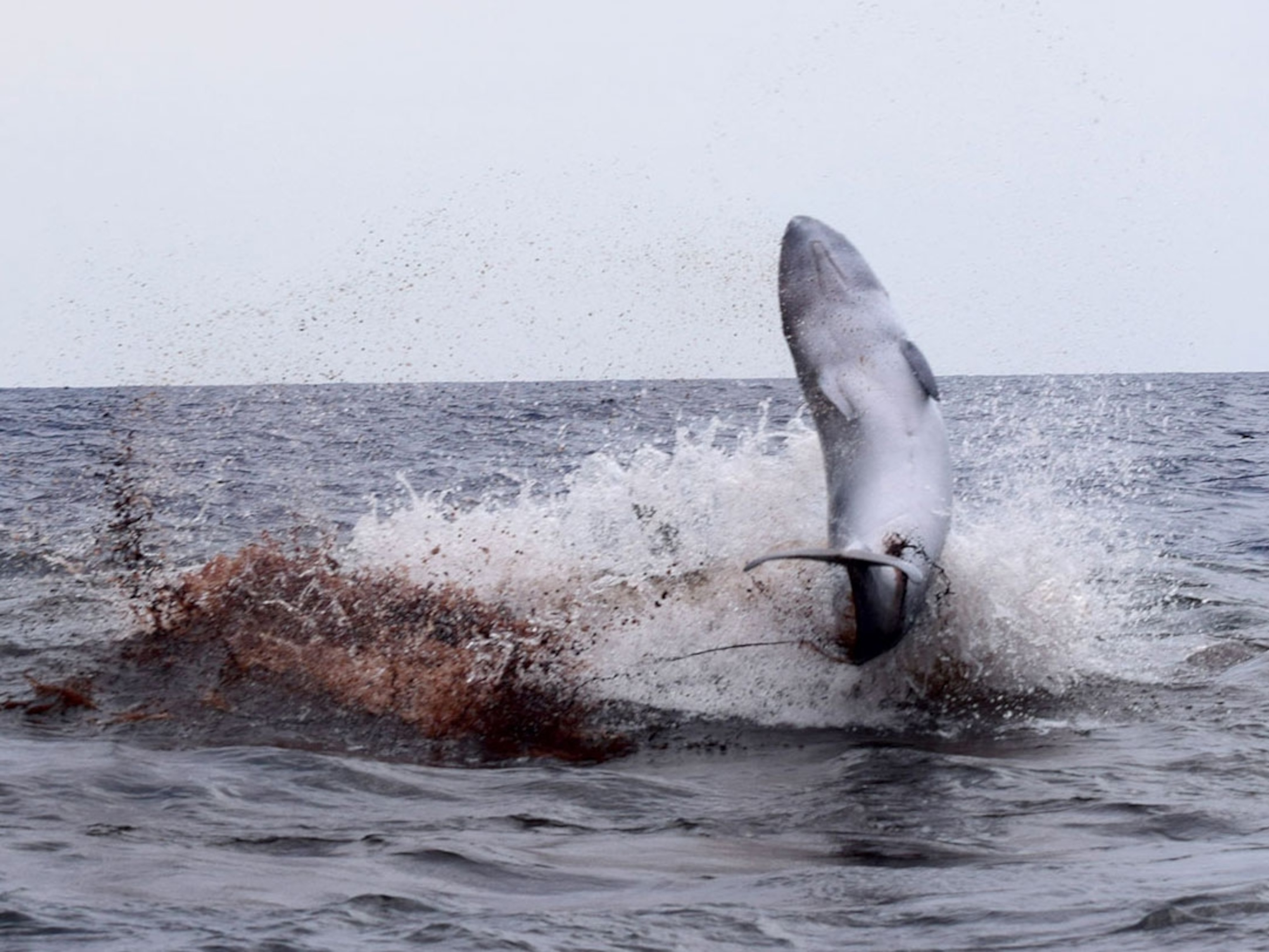When Alisa Schulman-Janiger heard great white shark carcasses had washed up on South African beaches without their livers a few years ago, she was shocked.
“I was thinking, Déjà vu, here we go again,” says the biologist, a research associate at the Natural History Museum of Los Angeles County.
In October 1997, tourists in a whale-watching boat off the Farallon Islands, near San Francisco, witnessed two killer whales attack a great white shark and consume its liver.
It was, at that time, the first documented sighting of killer whales eating white sharks. The incident sparked new lines of research, as well as some intriguing questions for Schulman-Janiger and many others: How could any ocean predator, even one called a killer whale, dominate the almighty great white?
“From that moment on, everything seemed to be different as far as perspective about orcas and white sharks,” Scot Anderson, a seasonal researcher for Monterey Bay Aquarium, says in the Whale That Ate Jaws: Eyewitness Report, which airs July 16 at 10 p.m. ET as part of National Geographic Channel’s SharkFest.
“It completely changed everybody's ideas.” (Read why great whites are still a mystery to us.)
As it turns out, it wasn’t a fluke. In 2017, five white sharks were found beached on South Africa’s Western Cape. Though no one saw the South African killer whales—also known as orcas—kill the sharks, the parallels to the other attacks made orcas the likely culprits.
Overall, the incidents show that interactions between these two predators can have major impacts on the food chain, says Anderson. For instance, his recent study shows that the presence of orcas scares sharks away from elephant seal colonies in the Farallon Islands, which in turn benefits seals, the great white’s main prey.
Following the 1997 attack, the entire great white population—about a hundred animals—left the islands prematurely and skipped their annual seal smorgasbord, Anderson says.
Between 2006 and 2013, the team tagged 165 white sharks with acoustic tags, and confirmed their hypothesis: The years that great whites crossed paths with orcas, they ate fewer seals.
Tasty livers
Alison Kock, a marine biologist at the Cape Research Centre in Cape Town, South Africa, had already been studying two orcas that were attacking and eating livers of broadnose sevengill sharks, a species that lives in the kelp forests of False Bay.
They were named Port and Starboard, since their dorsal fins flopped over—one to the left and one to the right.
When the white shark carcasses washed ashore in 2017, Kock and colleagues suspected the orca duo was to blame. They performed CSI-style necropsies on the bodies, which were intact, save for an impressively neat tear between the two pectoral fins. Apparently the orcas knew exactly where the liver was located, and sucked the organ out of the open wound. (Watch a video of killer whales attacking a blue whale.)
Similarities between the white shark and sevengill carcasses led Kock and colleagues to believe the two orcas were also responsible for their deaths. Also, amateur video footage from the 1997 California attack suggested that the South African orcas also may have similarly worked together to take down the white sharks.
“It’s fascinating that these two whales seemed to have kind of honed this to perfection where it’s almost a scientific extraction of the liver,” Schulman-Janiger says—“like an operation with a scalpel.”
It was “a great opportunity to study it in detail and particularly being able to follow up with carcasses, which we were never able to do” in California, Schulman-Janiger adds.
It’s likely that orcas target shark livers because they’re high-fat and delicious. “People do the same thing [with] butter, bacon—it's the reason why we love fatty foods,” Anderson says in the show. (Watch a rare video of young orcas hunting sea turtles.)
And a great white liver—crucial to maintaining buoyancy—is a substantial meal: Up to 600 pounds of meat.
Elusive killers
The orca population off South Africa is less well studied than the one off California, in part because humans rarely encounter them, according to Simon Elwen, a whale and dolphin biologist at South Africa's University of Pretoria.
“They tend to be out on the continental shelf or deeper waters,” he says. “There’s nobody doing targeted photographic or tagging studies, so we don’t know much about individual killer whales,” he says in the show. (Read about a mysterious new orca species that was recently identified.)
As of 2019, Port and Starboard have moved on to preying on another shark species, the bronze whaler.
This time though, Elwen and his team have been able to observe the predators in action, and have even succeeded in taking a small flesh sample from one of the marine mammals. This data can answer more questions about their diet and other genetic information, he says.

















